Colour Research Vol.2
Pigments or How Colours Are Created
Pigment (Latin: pigmentum for dye, colour, spice)
Pigments are colourants in the form of lumps or powder which, unlike dyes, are not soluble in any liquid. As fine powders they form the basis for paints and are mainly used as wall paints and in painting.
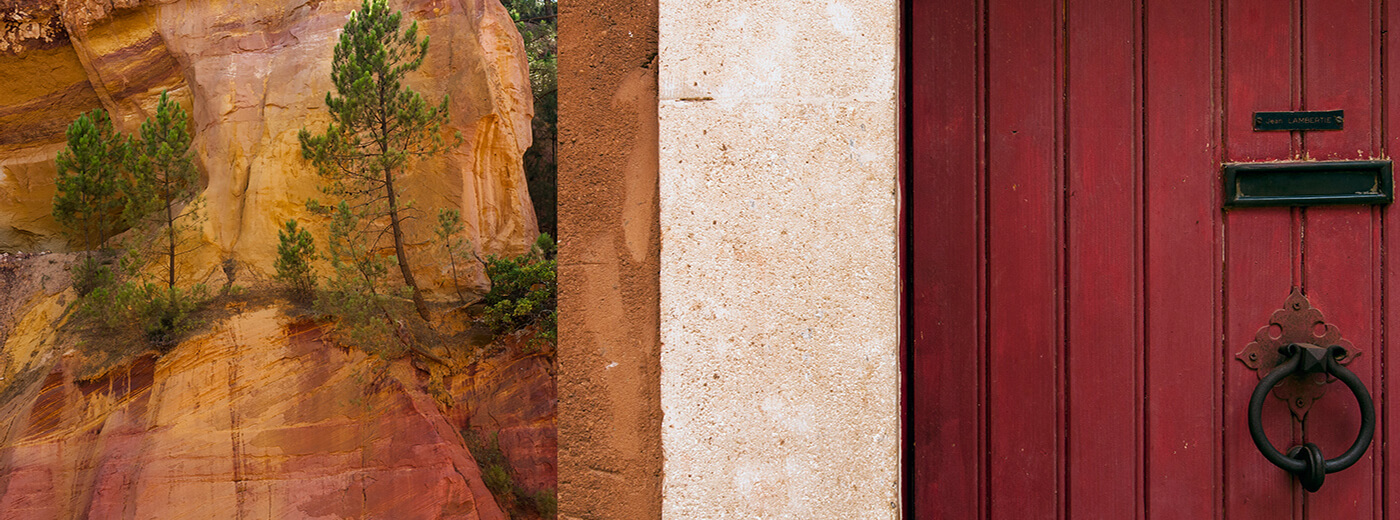
Natural Mineral Pigments: Metal makes the Difference
They are extracted from natural earths, minerals, rocks, and precious stones and were already used in prehistoric times. They are compounds of metals such as iron, calcium, barium, and manganese with oxygen and other non-metals. Earth pigments are produced from the raw materials by sludging, drying, grinding, and screening. There are almost countless shades and nuances. Further colour nuances are created by firing. The pigments obtained are usually very lightfast.
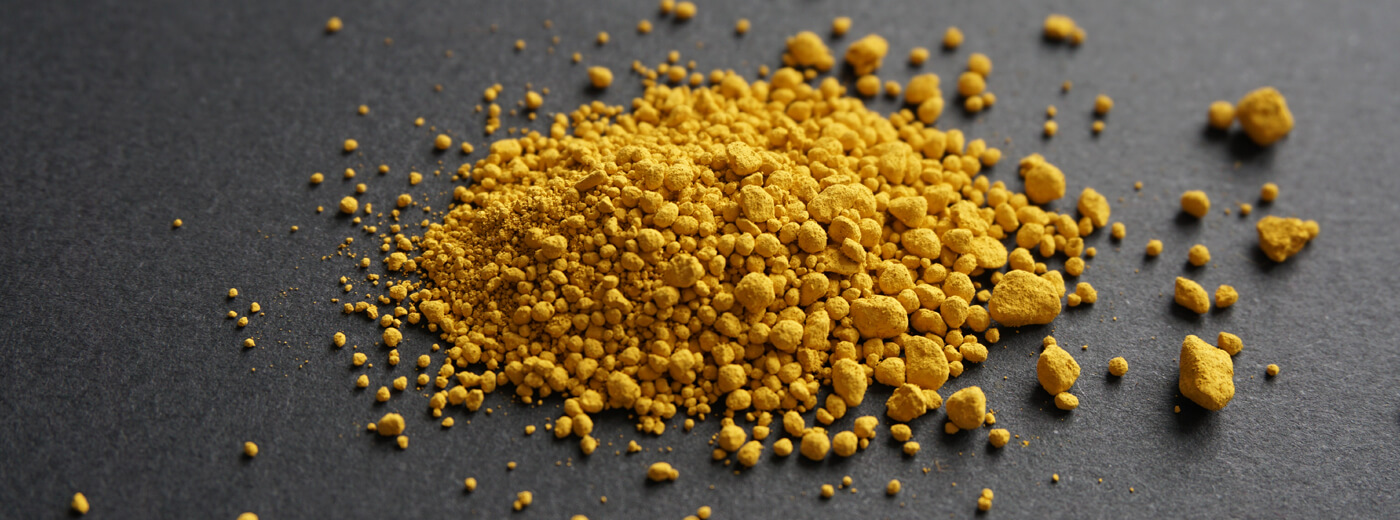
OCHRE: naturally occurring earth pigments, hydrous iron oxides. They range from light ochre and golden ochre to dark red shades. Firing produces red ochre nuances, such as the well-known Terra di Siena.
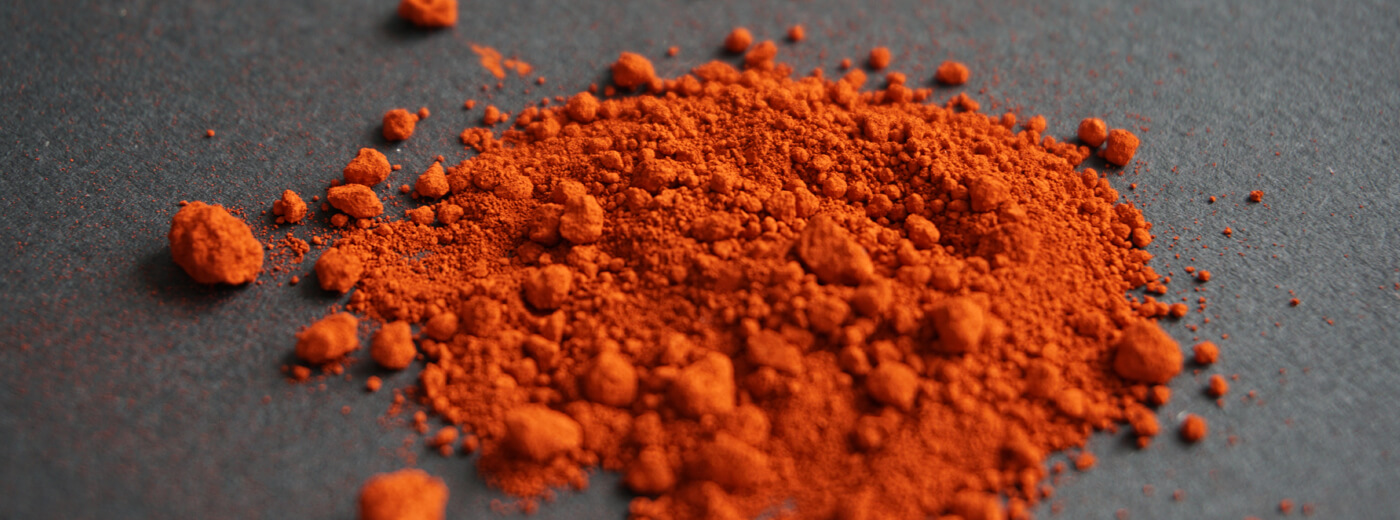
IRON OXIDE NATURE: a widespread pigment with orange-brown, red-violet to brown tones. One representative is the red bolus, which contains clay, alumina and aluminium silicates. Here, the colouring agent is iron oxide: hematite. Lightfast and resistant to moisture, heat and chemicals.
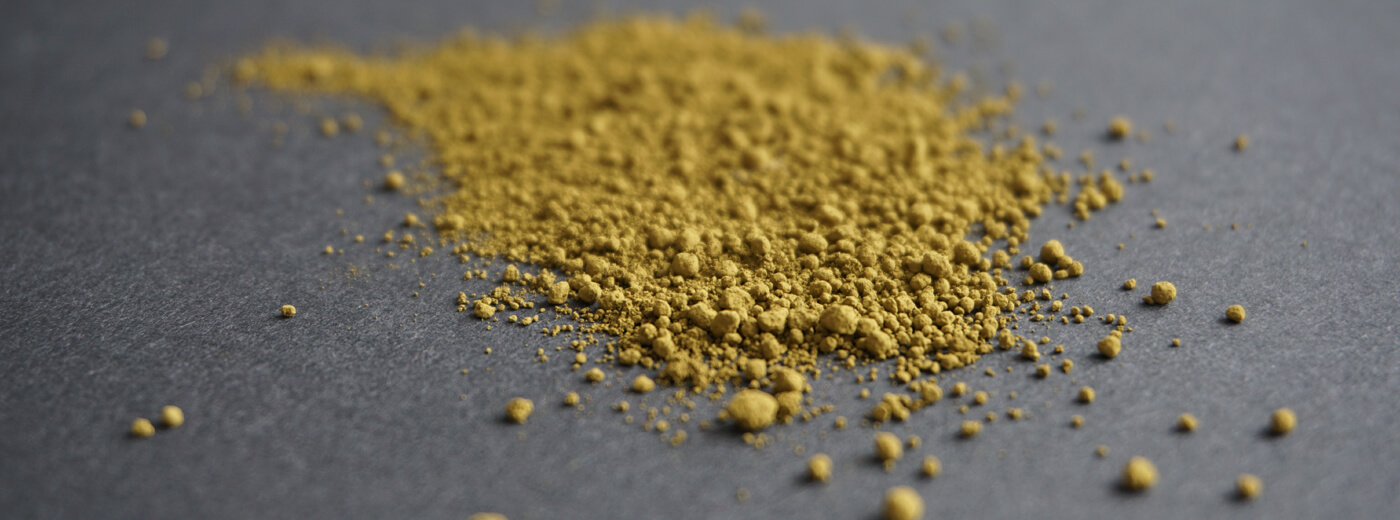
UMBRA: belongs to the ochre family, where more or less of the iron oxide content is replaced by manganese dioxide. The more manganese, the darker the colour, even as dark as black. Umbra is, of course, a warm shade. Other warm shades of brown are created by firing.
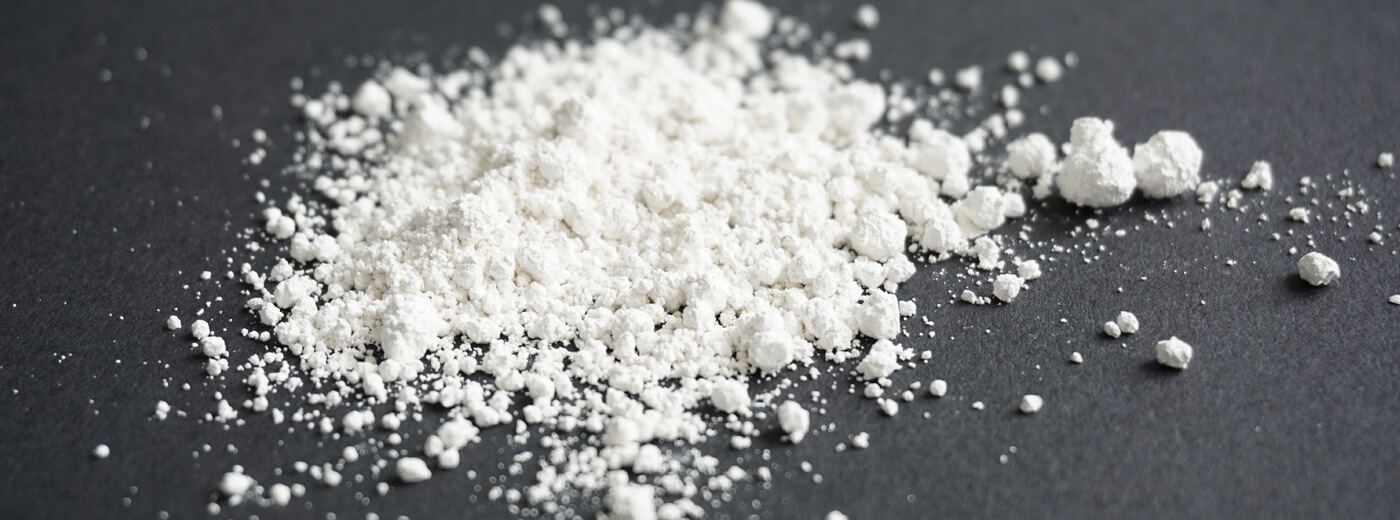
CHAMPAGNE CHALK: fine, soft sedimentary rock formed by deposited shells of fossil micro-organisms. The resulting limes are colouring and can be used as pigments and fillers. Champagne chalk is of special purity.
You can also find these colours in our new Histolith fan.
Natural Stones: Iron, Lime and Clay Set the Tone
These stones with their colouring are timeless and characterise the townscapes of many German old towns:
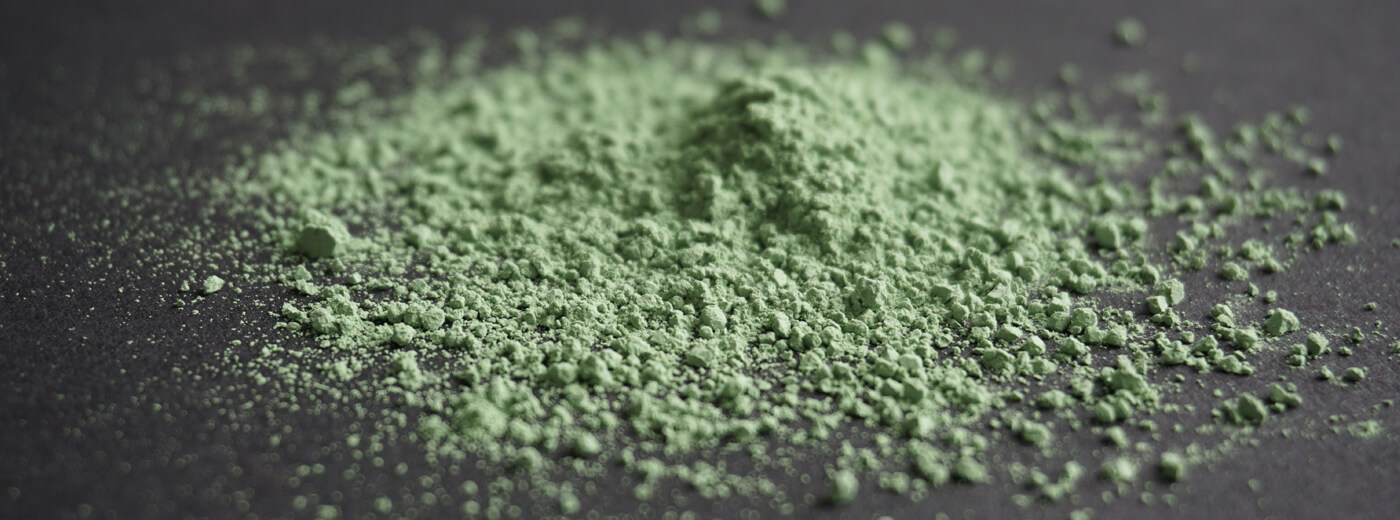
GREEN EARTH: Green earth usually consists of the minerals glauconite or celadonite. Bavarian Green Earth is made of green sandstone, which is of the same structure. It is non-toxic and lightfast.
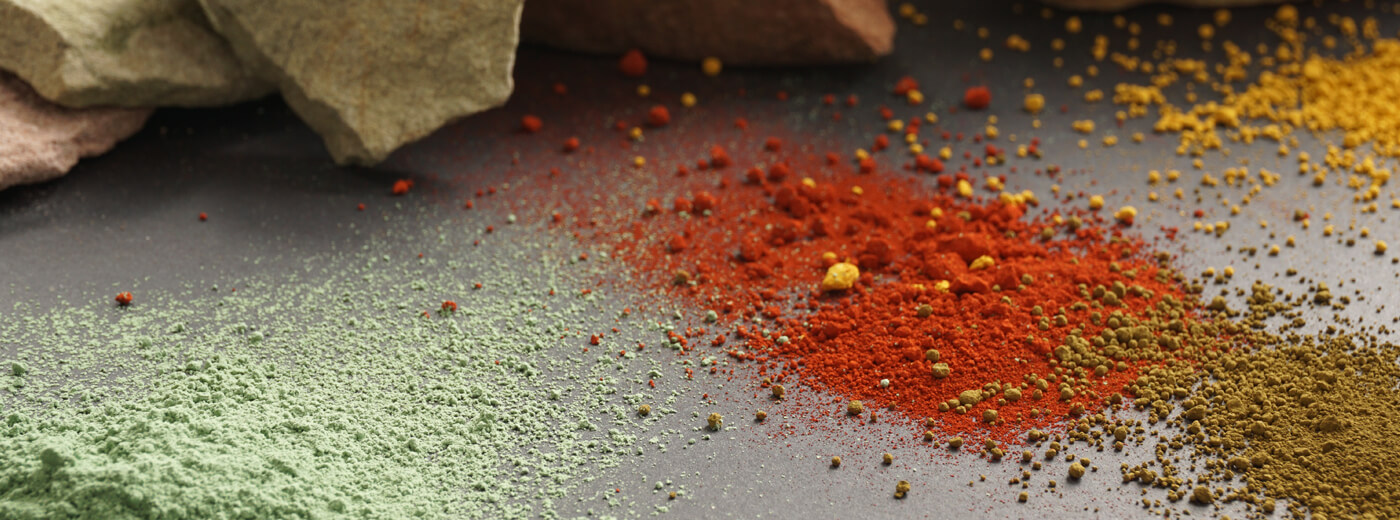
Sandstone sandstone is a sedimentary rock that consists of quartz (sand grains) as the main mineral. The colour of the quartz grains is light grey to white. The colours of sandstone are caused by other mineral rocks, such as glauconite, brings about the green colouring. Ferrous minerals such as iron ore hematite create red sandstone, while limonite the yellowish and brownish variants. The light micaceous muscovite gives the sandstone a silvery shimmer and glitter. These sandstones are primarily used as bases, door surrounds and window reveals.
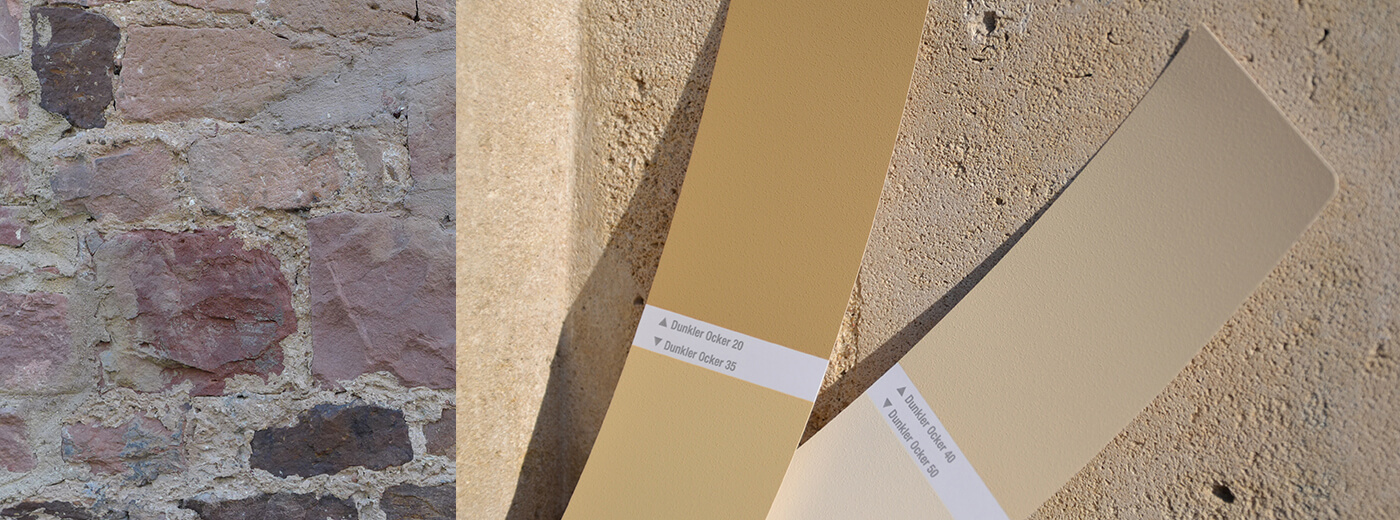
Shell limestone is a rock with fossils of limestone shells and calcareous skeletal remains of animal or plant life from seawater. Cream- to beige-grey tones are typical. Many historical buildings, city fortifications and castles were built of shell limestone. The so-called marl is also a sedimentary rock consisting of lime and clay. It is usually formed from plankton shells and mud. Its light grey-sandy colouring can often be found on facades. Basalt lava is a volcanic rock, dark grey and fine-grained, in numerous variations. It is an important building material for window surrounds, bases and stairs. As a filler for grey mortar, it is a colouring agent. The colours of natural stones can also be found in our new Histolith fan.
Sources:
Stefan Muntwyler: Farbpigmenet . Farbstoffe . Farbgeschichten (alataverlag)
www.geokoffer.de/download/muschelkalk.pdf
www.mineralienatlas.de/lexikon/index.php/
www.kremer-pigmente.de/32300.htm
https://de.wikipedia.org/wiki/Muschelkalk
www.pfalz.de/mergel-der




